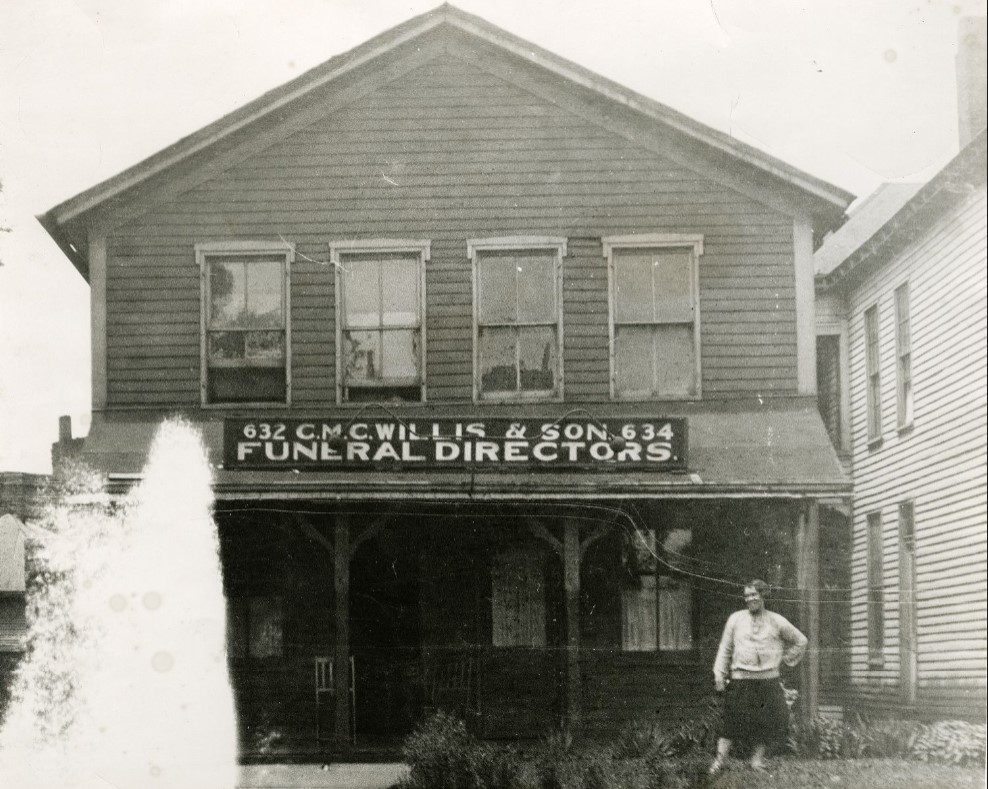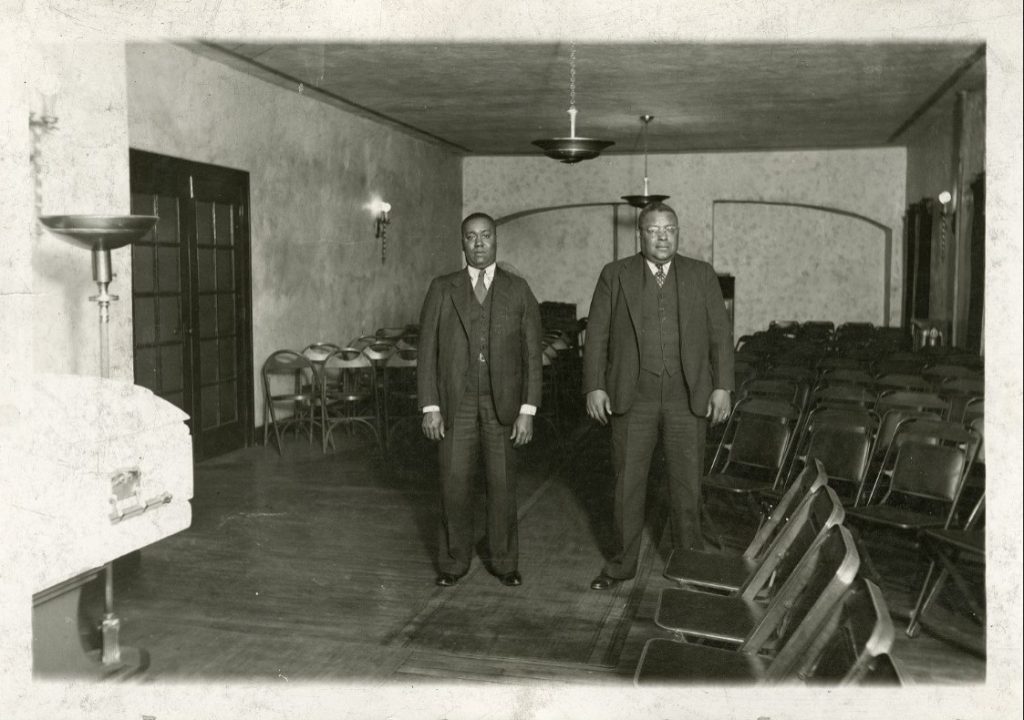Cassius Marcellus Clay Willis (C. M. C. Willis), the first certified Black mortician, funeral director, and undertaker in Indiana founded Willis Mortuary, the oldest Black-owned mortuary in Indiana in 1890. The business occupied three different locations in Indianapolis. The first location was on the 500 block of . The business moved to its second location in the Odd Fellows’ Building where it remained until 1913. In April of 1913, Willis purchased a double at 632-634 North West Street. He moved the mortuary to this location in August of 1913 where it remained until its closure in 2009.

Though other mortuaries existed in the city before the establishment of Willis Mortuary, the distinguishing feature of Willis Mortuary lay in Willis’ certification for “embalming and preserving” the dead which he received from the Massachusetts School of Embalming 1895. Lucas Willis, another certified embalmer, and no relation to C. M. C. Willis, joined the mortuary in 1900. Despite the credentials of the embalmers, little oversight of the embalming business existed at the turn of the 20th century. The lack of supervision opened the door to a spree of that Rufus Cantrell and James Harvey, two Willis Mortuary employees engaged in along with Joseph Alexander, the Director of Anatomy at the Central College of Physicians and Surgeons (see ) in Indianapolis in 1902. Campbell and Harvey plundered the graves at numerous cemeteries in Central Indiana to supply Alexander with corpses for his medical students to use in anatomical dissections. Campbell and Harvey accused Willis of participating in the grave robbing scheme, but evidence never surfaced of his involvement.
Despite the implications of Willis Mortuary’s participation in the grave robbing scheme, the mortuary retained respect among the Black community who continued to seek services from Willis Mortuary. Indeed, the business expanded through an increase in staff. Two of Willis’ seven children joined the family business. By 1905, daughter Beulah, who graduated from an embalming program as well, worked as one of the first licensed female embalmers in Indiana. Son Herbert worked as a funeral director and took over the business upon his father’s death in 1920.

After Herbert Willis died in 1952, longtime employee Paul H. Haizlip purchased the mortuary. Haizlip operated the business until his death, at which time his widow, Edna Haizlip took over until 1993. Another employee, George Greene, inherited the mortuary from Edna Haizlip in 1994.
Dispersal of the Black community around the mortuary due to gentrification, an increase in upscale developments, and pressure from funeral home chains contributed to the decline of Willis Mortuary’s revenues throughout the second half of the 20th century. The mortuary closed in 2009, after 119 years in business. However, the building, which houses the offices and fitness center for the 632 MILK Apartments and which Herbert Willis called “a temple to my people” still stands at 632 Dr. Martin Luther King Street (previously called North West Street) in Indianapolis.

Help improve this entry
Contribute information, offer corrections, suggest images.
You can also recommend new entries related to this topic.